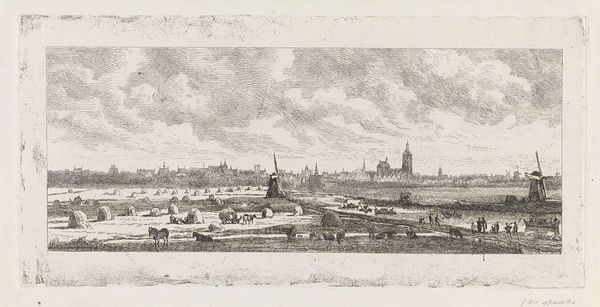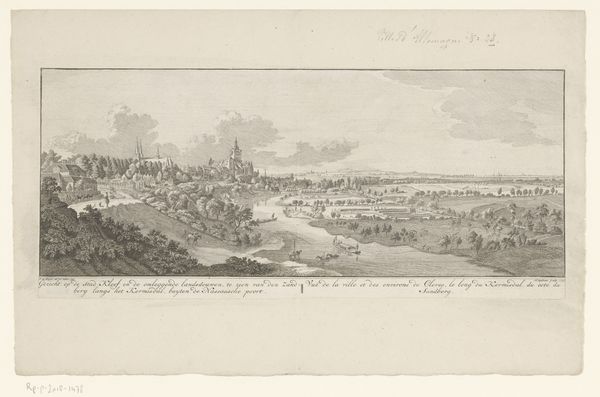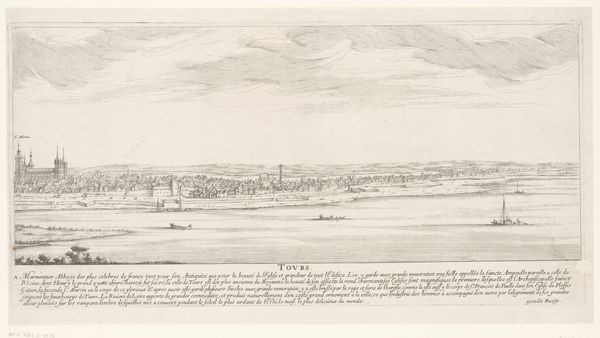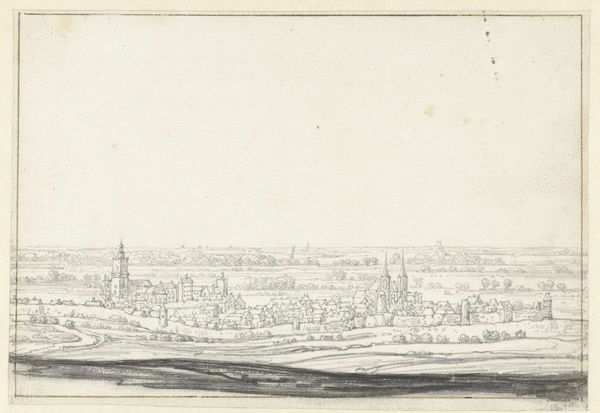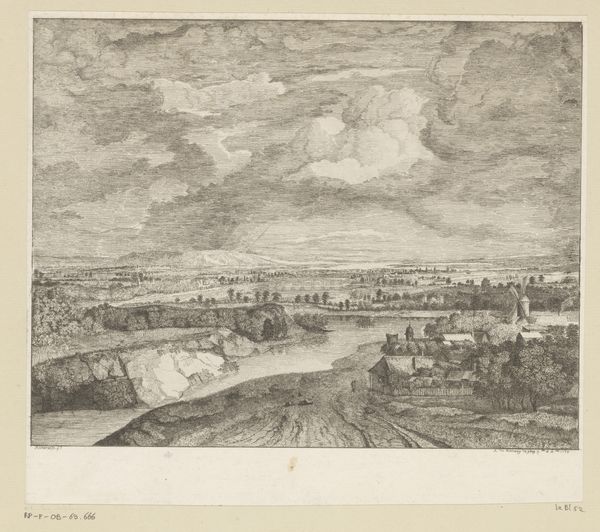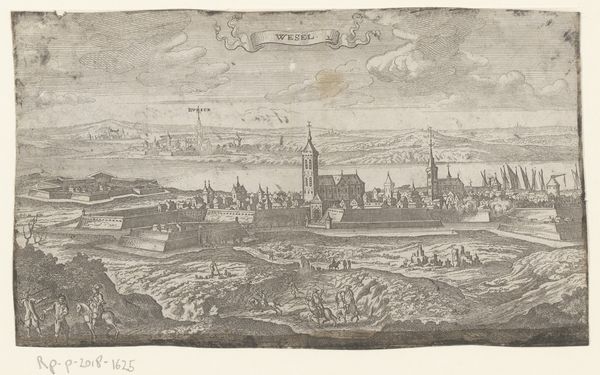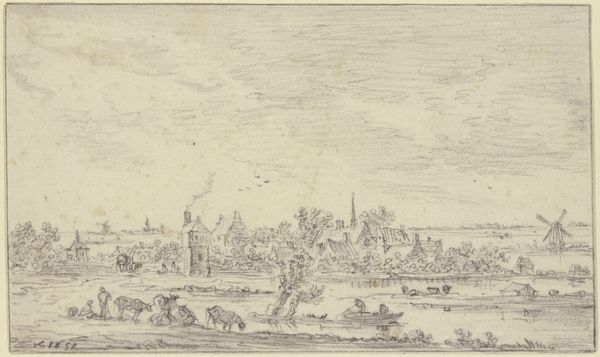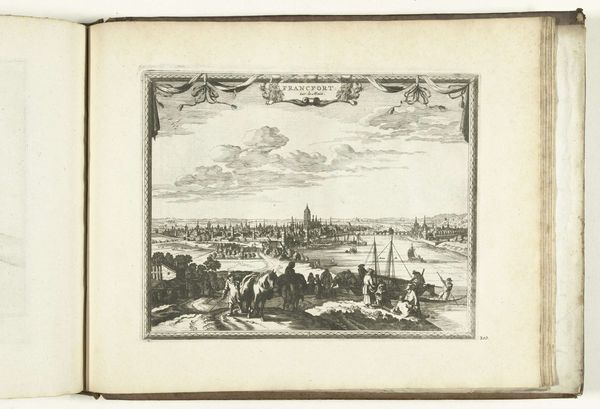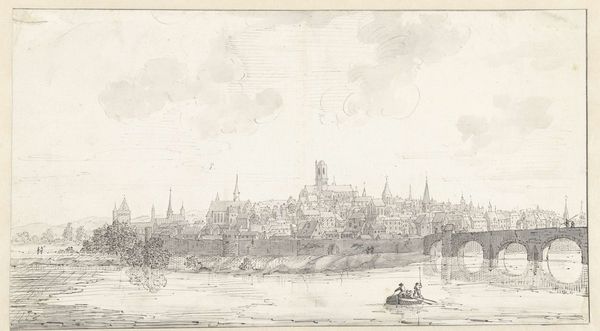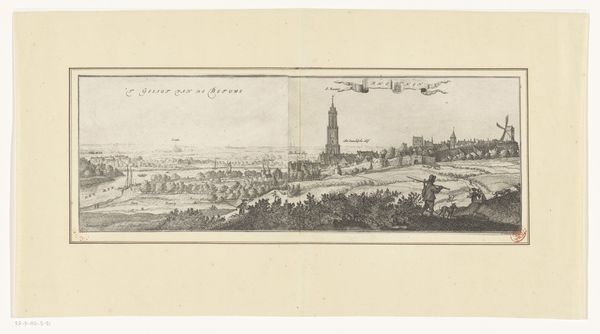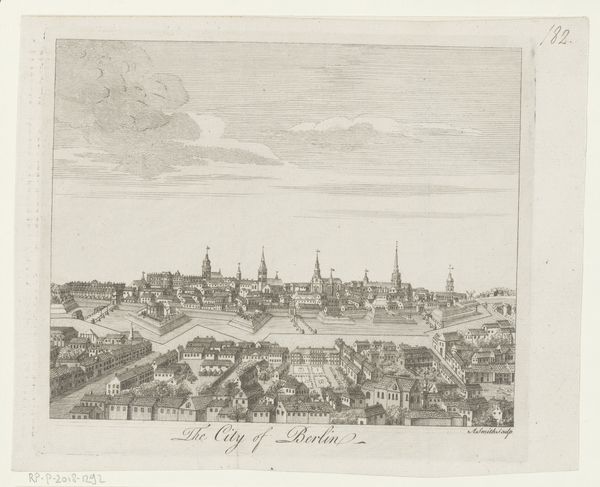
drawing, print, etching, paper, engraving
#
drawing
#
dutch-golden-age
# print
#
etching
#
landscape
#
paper
#
line
#
cityscape
#
engraving
#
realism
#
monochrome
Dimensions: height 120 mm, width 260 mm
Copyright: Rijks Museum: Open Domain
Julius Jacobus van de Sande Bakhuyzen created this print of The Hague using etching, but we don't know exactly when. Bakhuyzen presents a low-lying view of the city dominated by the Grote Kerk, a late Gothic church, and framed by windmills, reminding us that the Netherlands has long relied on wind power. It depicts the fields outside the city, populated with haystacks and farm animals. This is no urban idyll, but rather an image of a society still closely bound to the land. It is important to remember that museums themselves play a key role in shaping what we value as art. How did an image like this end up in the Rijksmuseum? In its own time, this image may have been viewed as a simple topographical view, but its presence here reflects the changing status of landscape imagery and printmaking within the Dutch art world. To understand the full story, we need to consult a variety of sources, from exhibition reviews to sales records. These help us better understand the role of art in a particular time and place.
Comments
No comments
Be the first to comment and join the conversation on the ultimate creative platform.
